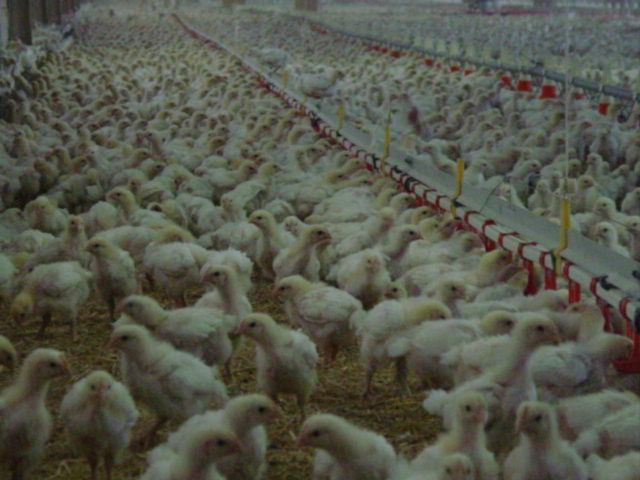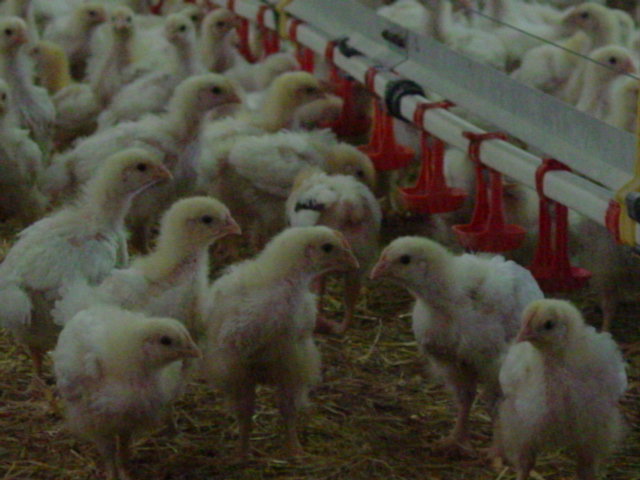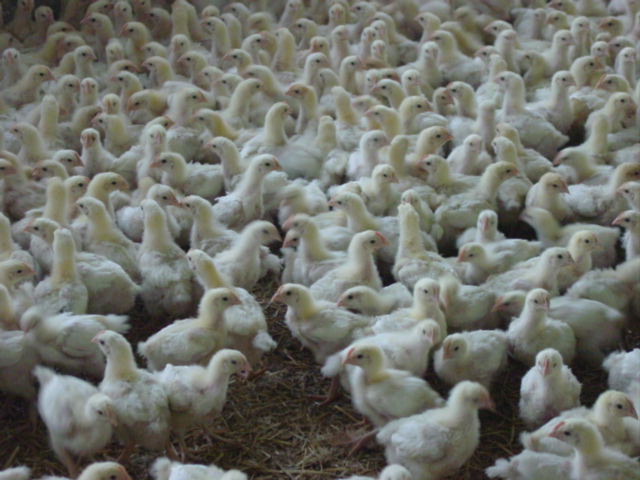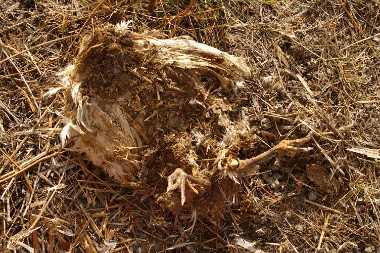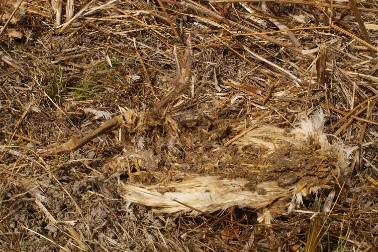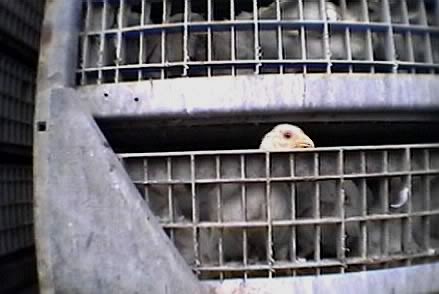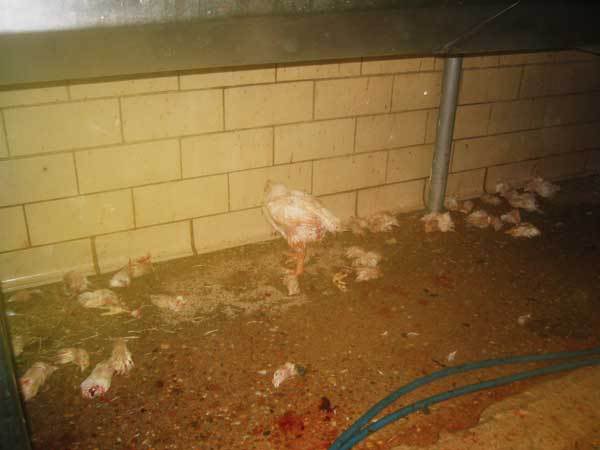Although
it seems that these broilers have plenty of space, in a couple of weeks
time they will be twice their size and will not be able to walk around
much.
They arrived when they were 1
day old, scattered around from their boxes. Already the very first
day there were a lot of casualties. A 10% loss at the end is not uncommon.
During
their stay here they never saw a ray of sunlight. They could not do
much more than eat or drink. In the beginning even at night time the lights were kept on,
so that they could find their food.
After
approximately 12 weeks the chickens could leave their barn, however
facing even more cruelty: the loading, the transportation to the
slaughter plant and finally slaughtering.
"These intensive production methods keep meat chickens in overcrowded conditions where many of their natural behaviours cannot be expressed. Their ability to exercise, forage for food, dust-bathe and perch are restricted.
This causes chickens serious
physical and psychological discomfort." Source: Compassion in World Farming
Live fast Die Young filmed by Compassion in World Farming.
This slideshow shows you every step from egg to slaughter of broiler chicks made by Free! (photos come from the internet)

